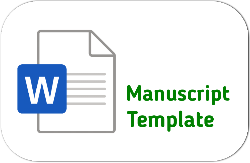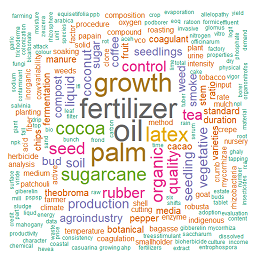Analisis Proses Pascapanen Kopi di Pusat Pelatihan Pertanian dan Pedesaan Swadaya (P4S) Kopi Gunung Ikamaja Kecamatan Sumberjaya Kabupaten Lampung Barat
DOI:
https://doi.org/10.25181/jaip.v12i2.3481Keywords:
facilities, infrastructure, roasting, sortingAbstract
The post-harvest coffee process is vital in determining the quality and quantity of coffee production. Problems that often occur in the post-harvest coffee process are incomplete or overcooked fermentation, improper drying process, high water content, improper roasting process, and inappropriate use of resources. For this reason, it is important to carry out proper processing in the post-harvest coffee process so that the quality of the coffee can be optimal. This research aims to analyze the post-harvest process of robusta coffee and identify post-harvest coffee facilities and infrastructure at P4S Kopi Gunung Ikamaja. The types of data used are primary data and secondary data. The data collection methods used in this research are expert interviews and active participation observation. The results of the study show that there are post-harvest coffee processes that do not comply with the provisions for post-harvest processing according to Minister of Agriculture Regulation Number 52/Permentan/OT.140/9/2012. In natural processing processes, those that are appropriate are the sorting, drying, horn stripping, roasting, and fine grinding stages, while those that are not appropriate are the packaging process. Honey process processing is in accordance with Minister of Agriculture Regulation Number 52/Permentan/OT.140/9/2012. The full wash process is not by Agriculture Ministerial Decree Number 52/Permentan/OT.140/9/2012 at the fermentation stage. Facilities and infrastructure based on building location are not yet appropriate; however, based on tools and machines and based on containers and packaging, they are by the provisions of Minister of Agriculture Number 52/Permentan/OT.140/9/2012.Downloads
References
Akbar, F. B., Yusuf, A., Thoriq, A., & Sugandi, W. K. (2020). Analisis teknik dan uji kinerja mesin pengolah kopi (pulper dan huller) mobile pada alat mekanis multiguna pedesaan (AMMDes) pengolahan kopi (Studi kasus di PT Kreasi Mandiri Wintor Indonesia, Kab. Bogor, Jawa Barat). Agroteknika, 3(1), 42–55. https://doi.org/10.32530/agroteknika.v3i1.65
Baihaqi, B., Desparita, N., Fridayati, D., Akmal, A., & Hakim, S. (2022). Kajian strategi penerapan teknologi pascapanen pada rantai pasok kopi ditinjau dari aspek nilai tambah dan susut pasca Panen. Jurnal Teknologi Pengolahan Pertanian, 4(1), 18–28. https://doi.org/10.35308/jtpp.v4i1.5683
Kasyfillah, L., & Setiawati, I. (2022). Pascapanen dan pemasaran kopi arabika di PT. Sinar Mayang Lestari, Kecamatan Pangalengan, Kabupaten Bandung. Agricore: Jurnal Agribisnis dan Sosial Ekonomi Pertanian Unpad, 7(2), 108–122. Retrieved from http://jurnal.unpad.ac.id/agricore/article/view/40433
Kembaren, E. T., & Muchsin, M. (2021). Pengelolaan pasca panen kopi arabika Gayo Aceh. Jurnal Visioner & Strategis, 10(1), 20–36. Retrieved from https://ojs.unimal.ac.id/visi/article/ view/4827
Kementan RI. (2012). Peraturan Menteri Pertanian. No. 52/Permentan/OT.140/9/2012 Tentang Pedoman Penanganan Pascapanen Kopi. Kementan RI.
Kuswoyo, M. T., & Mutaqin, B. K. (2023). Edukasi penanganan pasca panen kopi terhadap daya jual kopi di petani Duplak, Dusun Tempur, Keling Jepara. JASc (Journal of Agribusiness Sciences), 7(2), 144–152. https://doi.org/10.30596/jasc.v7i2.15676
Pusat Pelatihan Pertanian Pedesaan Swadaya Kopi Gunung Ikamaja. (2019). P4S Kopi Gunung Ikamaja. Retrieved May 15, 2024, from https://p4s-kopi-gunung-ikamaja.business.site/.
Rahardjo, P. (2012). Panduan Budidaya dan Pengolahan Kopi Arabika dan Robusta. Penebar Swadaya.
Reta, R., Dahlia, D., Larekeng, H., & Mustaka, Z. D. (2019). Kopi Arabika Kalosi Produk Unggulan Kabupaten Enrekang. UNRI Conference Series: Community Engagement, 1, 564–568. https://doi.org/10.31258/unricsce.1.564-568
Saragih, J. R. (2010). Kinerja produksi kopi arabika dan prakiraan sumbangannya dalam pendapatan wilayah Kabupaten Simalungun. J. VISI, 18(1), 98–112. Retrieved from https://www.researchgate.net/publication/3333883
Sari, M. D., Dewi, S., & Parwi, P. (2023). Pelatihan dan pendampingan pasca panen kopi Gondowido Ngebel Ponorogo. Jurnal Terapan Abdimas, 8(1), 65–72. https://doi.org/ 10.25273/jta.v8i1.13993
Siregar, A. Z. (2022). Pascapanen kopi mendukung pertanian berkelanjutan Di Desa Hutanamale Puncak Sorik Marapi, Madina. Jurnal Pengabdian Masyarakat Teknik, 4(2), 95–99. https://doi.org/10.24853/jpmt.4.2.95-99
Thalia, T., Ersan, E., Delvitasari, F., & Maryanti, M. (2020). Pengaruh fermentasi S. cerevisiae terhadap mutu kopi robusta. Agritop, 18(1), 60–76. https://doi.org/10.32528/ agritrop.v18i1.3489
Yokawati, Y. E. A., & Wachjar, A. (2019). Pengelolaan panen dan pascapanen kopi arabika (Coffea arabica L.) di kebun Kalisat Jampit, Bondowoso, Jawa Timur. Buletin Agrohorti, 7(3), 343–350. https://doi.org/10.29244/agrob.v7i3.30471
Zuniyanto, R. (2019). Analisis proses pasca panen kopi di Kabupaten Batang terhadap uji cita rasa dan kwalitas kopi standar Speciality Coffee Association America (SCAA). RISTEK: Jurnal Riset, Inovasi dan Teknologi Kabupaten Batang, 3(2), 27–41. https://doi.org/10.55686 /ristek.v3i2.54
Downloads
Published
How to Cite
Issue
Section
License
Copyright (c) 2024 Kordiyana K. Rangga, Nanda Pardani

This work is licensed under a Creative Commons Attribution-ShareAlike 4.0 International License.
Authors who publish with Jurnal Agro Industri Perkebunan agree to the following terms:
Authors retain copyright and grant the Jurnal Agro Industri Perkebunan right of first publication with the work simultaneously licensed under a Creative Commons Attribution License (CC BY-SA 4.0) that allows others to share (copy and redistribute the material in any medium or format) and adapt (remix, transform, and build upon the material for any purpose, even commercially) with an acknowledgment of the work's authorship and initial publication in Jurnal Agro Industri Perkebunan.
Authors are able to enter into separate, additional contractual arrangements for the non-exclusive distribution of the journal's published version of the work (e.g., post it to an institutional repository or publish it in a book), with an acknowledgment of its initial publication in Jurnal Agro Industri Perkebunan. Authors are permitted and encouraged to post their work online (e.g., in institutional repositories or on their website) prior to and during the submission process, as it can lead to productive exchanges, as well as earlier and greater citation of published work.


























